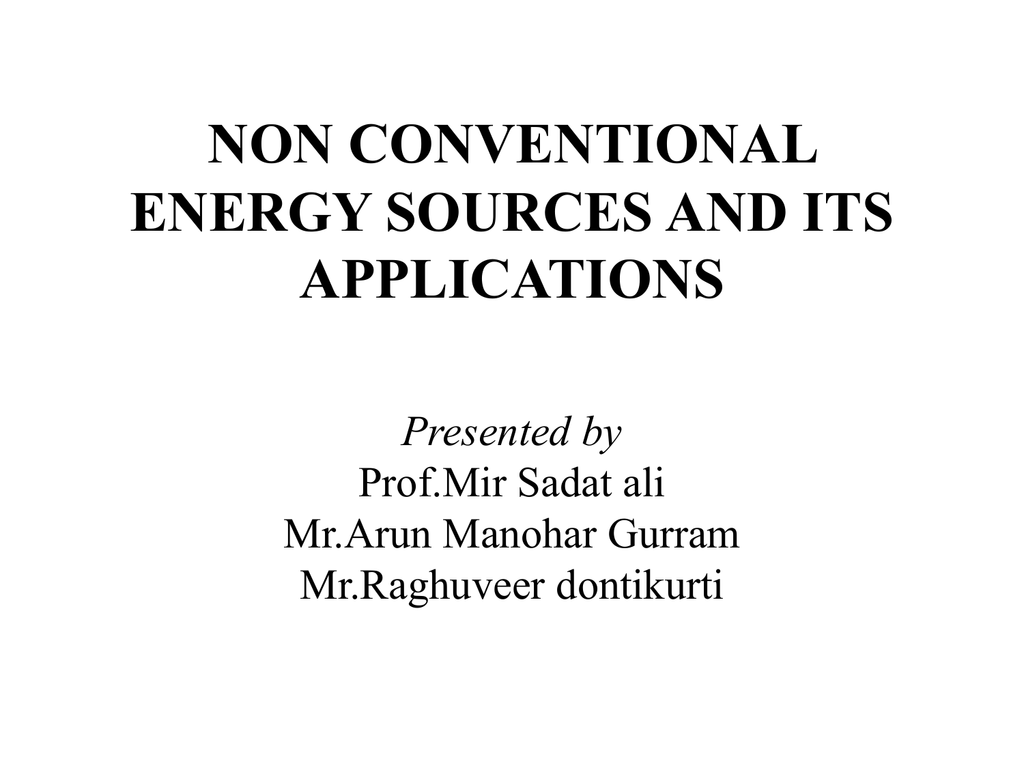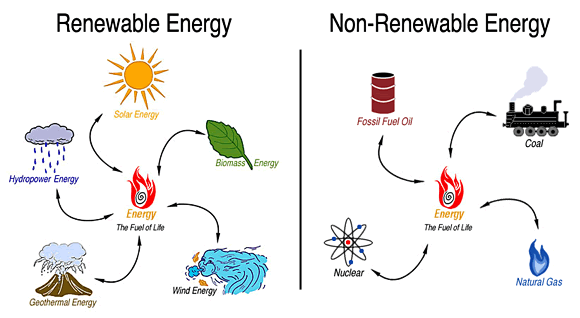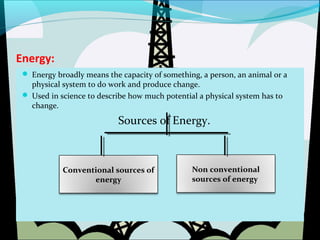Non-conventional sources of energy, also known as renewable or alternative energy sources, refer to energy sources that are not derived from fossil fuels. These energy sources are becoming increasingly important as the world looks for ways to reduce its reliance on fossil fuels and mitigate the negative impacts of climate change. There are several non-conventional sources of energy that are being used or have the potential to be used in the future, including solar, wind, hydroelectric, geothermal, and biomass energy.
Solar energy is perhaps the most well-known non-conventional source of energy. Solar panels, which are made up of photovoltaic cells, convert sunlight into electricity. Solar panels can be installed on rooftops or in large solar farms, and the electricity they produce can be used to power homes, businesses, and even entire communities. Solar energy is a clean and renewable energy source, and it is becoming increasingly affordable as the technology improves.
Wind energy is another non-conventional source of energy that is being used more and more around the world. Wind turbines, which are large structures with blades that spin when wind blows, are used to generate electricity. Wind turbines can be installed on land or offshore, and they can generate electricity for a single home or for a whole community. Like solar energy, wind energy is clean and renewable, and it has the potential to provide a significant amount of the world's electricity needs.
Hydroelectric energy is another non-conventional source of energy that has been used for centuries. Hydroelectric power plants use the movement of water to generate electricity, and they can be built on rivers, lakes, or even oceans. Hydroelectric energy is a clean and renewable energy source, and it is often used in areas where other non-conventional energy sources are not practical.
Geothermal energy is another non-conventional source of energy that is being used more and more around the world. Geothermal energy is generated from the heat that is produced by the Earth's core, and it can be harnessed through geothermal power plants. Geothermal energy is a clean and renewable energy source, and it has the potential to provide a significant amount of the world's electricity needs.
Biomass energy is a non-conventional energy source that is produced from organic materials, such as wood, agricultural waste, and even garbage. Biomass energy can be used to generate electricity, and it is often used in areas where other non-conventional energy sources are not practical. Biomass energy is a clean and renewable energy source, and it has the potential to provide a significant amount of the world's energy needs.
Overall, non-conventional sources of energy are becoming increasingly important as the world looks for ways to reduce its reliance on fossil fuels and mitigate the negative impacts of climate change. These energy sources are clean, renewable, and have the potential to provide a significant amount of the world's energy needs. As such, it is important that we continue to invest in and develop these energy sources in order to create a more sustainable and secure energy future.








